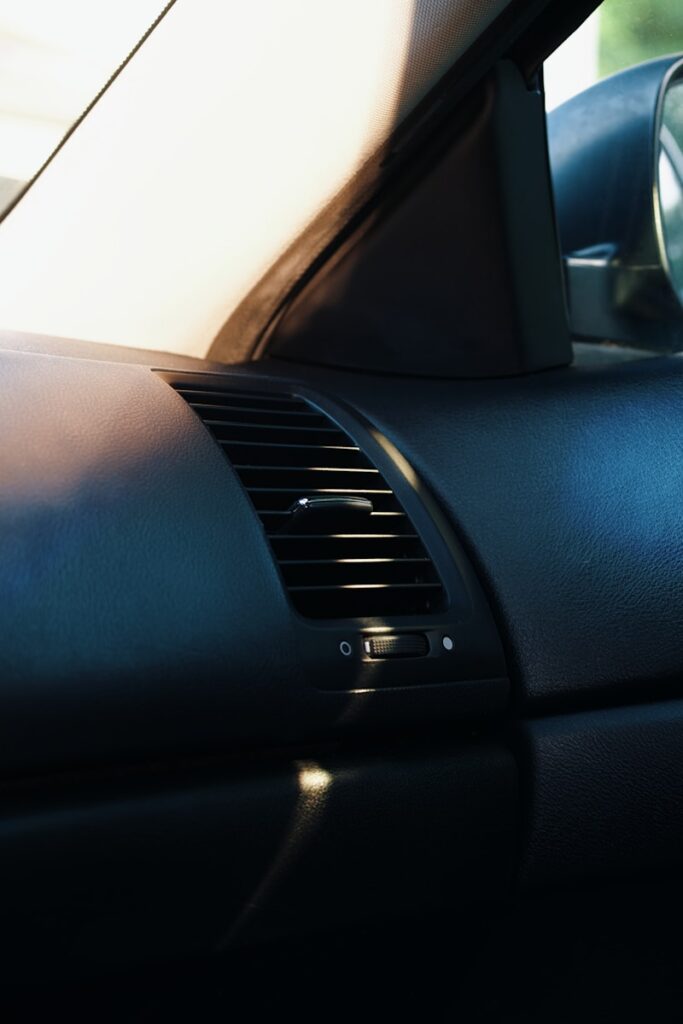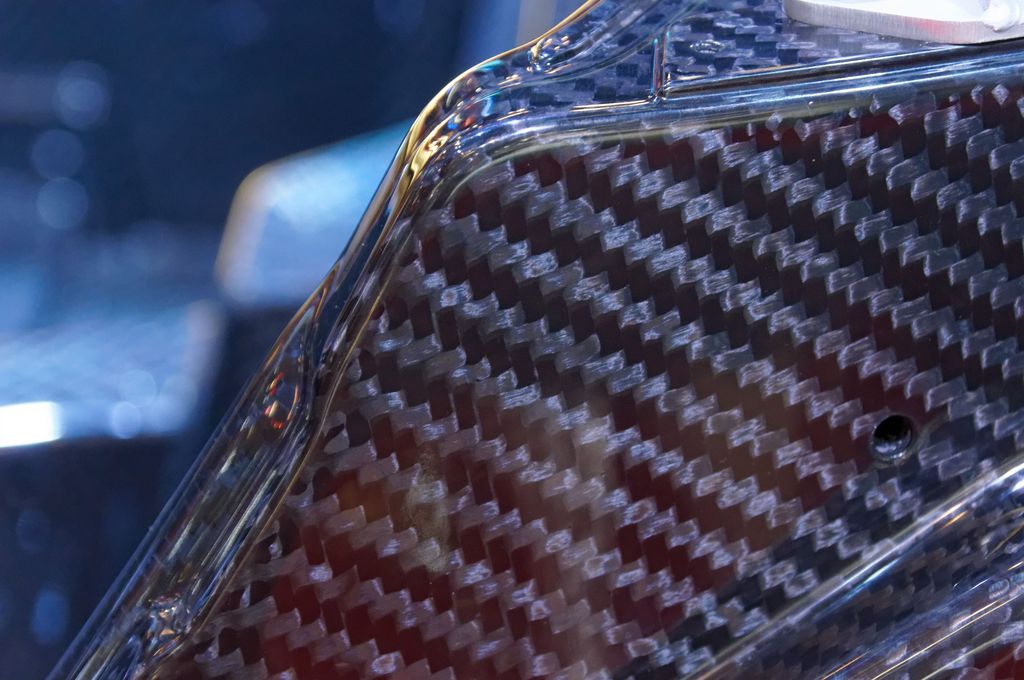
The golden years of retirement offer a unique opportunity to embrace long-held passions, and for many, that passion vividly comes to life in the form of a classic car. With a growing number of baby boomers entering retirement, the classic car market presents a compelling intersection where a rewarding hobby meets a strategic investment. It’s more than just collecting; it’s about delving into automotive history, connecting with a vibrant community, and potentially cultivating a valuable asset that truly enriches your post-career life.
A significant shift is occurring in the market that makes now an ideal time to consider this pursuit. As Brook McGuire, strategy lead for specialty products at Safeco, observes, “Suddenly there is a lot of supply in the market and that’s driving prices down for a lot of vehicles that, frankly, have probably been a little overvalued.” This increased availability, combined with a broad enthusiasm for vintage rides, creates a favorable environment. For retirees on a fixed income, accessing these vehicles is increasingly feasible, with “many websites today that actually allow you to search by payment,” as Justin Byrd, president of Team Velocity, highlights, simplifying the search for affordable options.
Beyond financial considerations, owning a classic car offers deep personal fulfillment. It’s an engaging hobby that fosters focus and activity, providing specific goals in maintenance and customization. The hands-on work often requires physical effort and problem-solving skills, keeping both mind and body sharp. Moreover, it serves as a gateway to a special community of fellow enthusiasts, leading to new social connections at car clubs and events. This potent blend of personal satisfaction and financial prudence makes a classic car an exceptionally appealing acquisition for retirement.
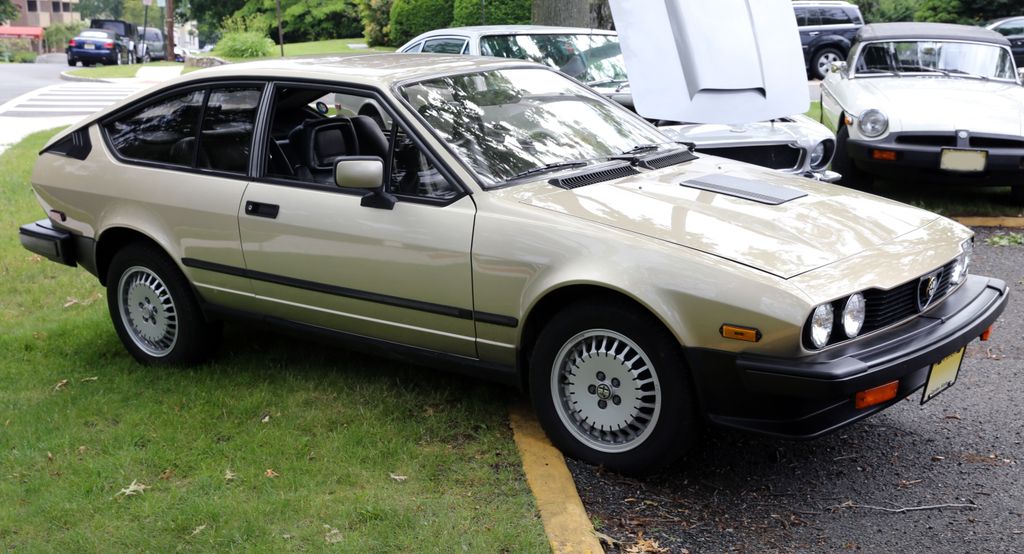
1. **Alfa Romeo GTV6** The Alfa Romeo GTV6, a striking Italian-designed coupe built on the race-derived 116 type chassis, boasts an unmistakable 1980s aesthetic that has steadily gained appreciation. Its unique blend of European flair and spirited performance makes it a captivating choice for retirees valuing distinctive automotive artistry. Despite over 20,000 units produced, the GTV6 has consistently climbed in value, mirroring a broader trend of vintage Alfas experiencing market spikes, positioning it as a smart acquisition for discerning collectors.
Desirable models typically fall between 1981 and 1986, representing a distinct era of automotive design and engineering. Powering this coupe is a 2.5L V6 engine, celebrated for its melodic exhaust note and engaging power delivery. This engine delivers a driving experience that deeply connects with the enthusiast, offering a level of interaction and enjoyment that is rare in modern vehicles, making it a significant draw for those seeking a true driver’s car during retirement.
For retirees aiming to combine a passion for driving with a savvy investment, the GTV6 holds particular promise. Its growing recognition within the classic car community signals potential for continued appreciation. Owners can enjoy piloting a distinctive vehicle, participate in dedicated Alfa Romeo clubs, and showcase their car, all while being confident in the long-term potential of their investment. This car truly offers a dual benefit: an exhilarating hobby and a wise financial decision for the golden years.
Car Model Information: 2022 Honda Civic Sport
Name: Alfa Romeo Alfetta
Caption: 1978 Alfa Romeo Alfetta GTV 2.0
Manufacturer: Alfa Romeo
Production: 1972–1987
Assembly: Arese,Rosslyn, Gauteng
BodyStyle: Sedan (automobile)
Layout: Front-engine, rear-wheel-drive layout
Related: Alfa Romeo Giulietta (116),Alfa Romeo Alfa 6,Alfa Romeo 90
Categories: 1980s cars, Alfa Romeo vehicles, Articles with short description, CS1 Dutch-language sources (nl), CS1 French-language sources (fr)
Summary: The Alfa Romeo Alfetta (Type 116) is a front-engine, five-passenger saloon and fastback coupé manufactured and marketed by Italian automaker Alfa Romeo from 1972 to 1987 with a total of over 400,000 units produced during its production run.
The Alfetta was noted for the rear position of its transaxle (clutch and transmission) and its De Dion tube rear suspension — an arrangement designed to optimize handling by balancing front/rear weight distribution, as well as maintaining a low polar moment of inertia and low center of gravity. The interior of Coupé models featured a then unusual central tachometer placement — by itself, directly in front of the driver.
The Alfetta name, which means “little Alfa” in Italian is derived from the nickname of the Alfa Romeo Alfetta (Tipo 159), a successful Formula One car which in its last iteration introduced in 1951, paired a transaxle layout to De Dion tube rear suspension — like its modern namesake.
Get more information about: Alfa Romeo Alfetta
Buying a high-performing used car >>>
Brand: Alfa Romeo Model: GTV6
Price: $25,849 Mileage: 16,061 mi.
Read more about: The Road Less Traveled (and Valued): 14 Classic Cars That Are Now Worth Less Than You Think
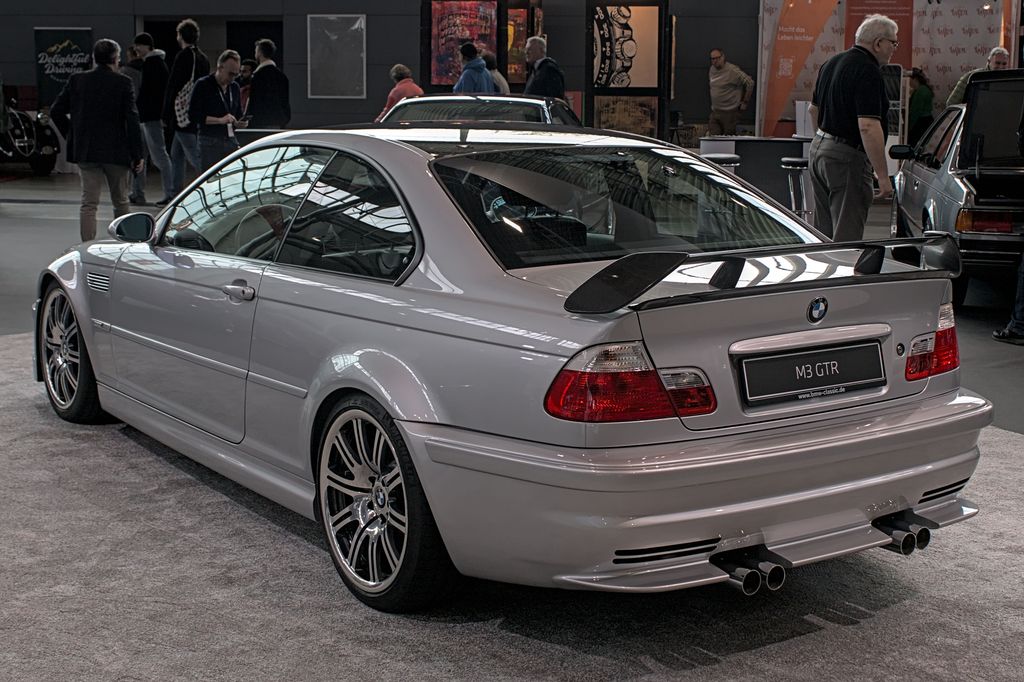
2. **BMW 2002** Once an affordable classic, the BMW 2002 has seen a remarkable rise in value over the last decade, with clean examples now fetching $20,000 to $50,000. This nimble two-door, named for its 2.0-liter engine, is sought after across all its trims and production years, symbolizing BMW’s early reputation for sporty, driver-focused cars. Its appreciation reflects a growing love for its engaging dynamics and historical significance.
Rarer variants like the Targa, 2000tii Touring, and Turbo models naturally command higher prices due to limited production and enhanced performance. Examples built before 1974 are also more coveted, predating BMW’s shift to a square taillight design. For retirees valuing superb German engineering and a dynamic driving experience, the 2002 offers a compelling blend of heritage, performance, and solid investment potential.
The 2002’s appeal extends beyond performance, embodying timeless design and a rich automotive legacy. Owning one connects retirees to a significant era of European innovation, providing a vehicle that is both a joy to drive and a testament to lasting quality. Its consistent appreciation reaffirms its status as an “investment-grade classic,” appealing to those who seek emotional satisfaction and tangible financial returns during retirement.
Car Model Information: 1971 BMW 2002
Name: BMW 02 Series
Caption: BMW 1600-2
Production: 1966–1977,837,038 units
Assembly: Munich
Class: Compact executive car
BodyStyle: 2-door coupé , 2-door convertible , 3-door hatchback
Layout: Front-engine, rear-wheel-drive layout
Engine: ubl
Wheelbase: cvt
Length: cvt
Width: cvt
Height: cvt
Weight: cvt
Transmission: 4-speed manual , 5-speed manual ,3-speed automatic
Successor: BMW 3 Series (E21)
Designer: Giovanni Michelotti
Manufacturer: BMW
Categories: 1970s cars, Articles with short description, BMW vehicles, CS1 German-language sources (de), CS1 Italian-language sources (it)
Summary: The BMW 02 Series is a range of sporty compact executive cars produced by German automaker BMW between 1966 and 1977, based on a shortened version of the New Class Sedans.
The first 02 Series produced was the 1600-2 (later renamed 1602) in 1966. In 1975, the 02 Series was replaced by the E21 3 Series (except for the 1502 model, which continued until 1977).
Get more information about: BMW 02 Series
Buying a high-performing used car >>>
Brand: BMW Model: 2002
Price: $45,550 Mileage: 5,001 mi.
Read more about: From Dominance to Decline: Why These 12 Iconic Car Brands Are Fading Fast in Today’s Volatile Market
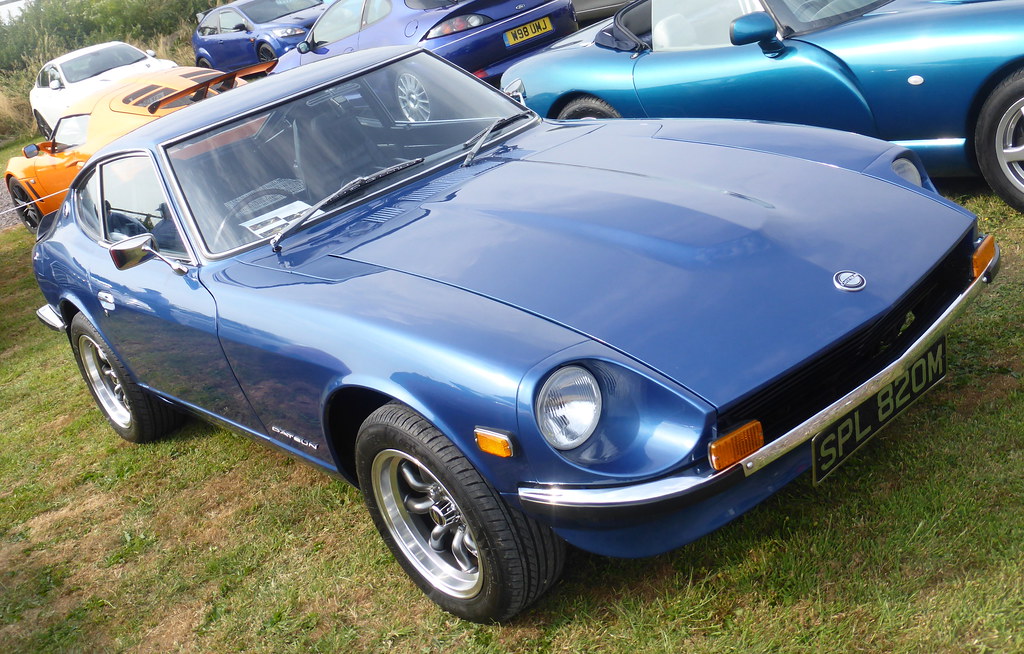
3. **Datsun 240/260/280Z** The Datsun Z lineup — 240Z, 260Z, and 280Z — has secured a celebrated niche among classic sports cars. Though playfully dubbed a “poor man’s Porsche 911,” these vehicles deliver genuinely exhilarating vintage performance. Once bargains, these models have steadily climbed in value, reflecting increasing recognition of their engineering prowess, sleek Japanese design, and pivotal role in the global sports car market.
Desirable years for the Datsun Z series typically span from 1969 to 1978, covering the evolution of these groundbreaking machines. Powered by a robust 2.4L Straight-Six engine, they offer a compelling and engaging driving sensation cherished by enthusiasts. Interestingly, even modified race-build Zs tend to hold their value well, indicating strong, broad-based demand for the Z platform.
For retirees, Datsun Z cars offer an accessible entry into classic sports car ownership, blending driving enjoyment with financial potential. Their relative reliability and straightforward mechanical design can make maintenance less daunting than with more temperamental European counterparts. The thriving global Z car community also provides invaluable resources and support, enhancing the ownership experience and making these timeless Japanese sports cars both a rewarding hobby and a savvy, appreciating asset for retirement.
Read more about: Future Fortunes on Four Wheels: 14 Classic Cars You Need to Buy Now Before Their Value Explodes

4. **International Harvester Scout (& Scout II)** As original Ford Broncos become largely unattainable, the International Harvester Scout and Scout II stand out as increasingly valuable alternatives in the vintage 4×4 market. These rugged American icons can still be acquired at fair prices, with some models ranging from $10,000 to $15,000. However, pristine, original examples can command up to $80,000, showcasing a diverse investment range for retirees interested in off-road classics.
Desirable production for the Scout series spans from 1961 to 1980, a testament to their robust build and enduring appeal. They offered diverse engine choices, from 2.5L i4 to 5.0L V8, providing ample power and versatility for various retirement adventures. Both Scout models are also excellent candidates for “restomod” off-road builds, offering a profoundly rewarding project for hands-on retirees who enjoy customization and mechanical work.
The investment potential of the International Harvester Scout series is strong. As vintage SUV demand expands, these models steadily appreciate, becoming both a fascinating hobby and a sound long-term financial asset. Their distinctive utilitarian design and legendary off-road capability attract a broad base of collectors and adventurers, ensuring sustained demand and significant profit potential for thoughtful investors during retirement.
Car Model Information: 2022 Honda Civic Sport
Name: International Scout
Caption: 1978 Scout II wagon
Manufacturer: International Harvester
Production: 1961–1980
Class: Full-size,SUV
Assembly: Fort Wayne, Indiana
BodyStyle: SUV
Layout: Front-engine, rear-wheel-drive layout,rear-wheel drive
Categories: 1970s cars, 1980s cars, All-wheel-drive vehicles, All articles needing additional references, All articles with dead external links
Summary: The International Scout is an off-road vehicle produced by International Harvester from 1960 to 1980. Created as a competitor for the Jeep CJ, the Scout was the precursor of more sophisticated SUVs, including the Ford Bronco, Chevrolet Blazer, and the later Jeep Cherokee.
Produced for two generations, the Scout was designed as an open-top two-door truck as a base vehicle with options to configure it as a station wagon, half-cab pickup truck, or a soft-top convertible.
International Harvester assembled the model line in its facility in Fort Wayne, Indiana.
Get more information about: International Scout
Buying a high-performing used car >>>
Brand: International Harvester Model: Scout
Price: $25,849 Mileage: 16,061 mi.
Read more about: Future Fortunes on Four Wheels: 14 Classic Cars You Need to Buy Now Before Their Value Explodes
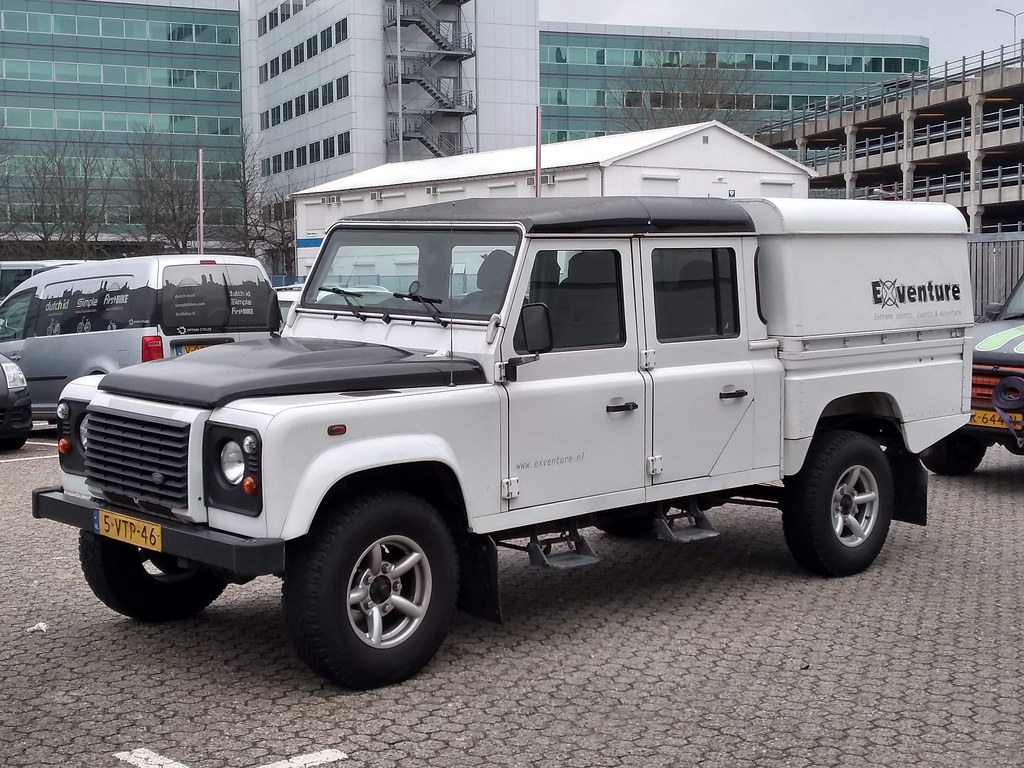
5. **Land Rover Defender** The Land Rover Defender, an icon of rugged capability and timeless design, continues to enthrall enthusiasts and investors. While already a substantial investment, its market value consistently appreciates, solidifying its status as a truly fantastic vehicle for retirees. Those with a larger initial budget, or an appetite for restoration, can find “basket-case” examples more affordably, with expert restoration potentially yielding significant returns.
This restoration approach offers an engaging hobby, transforming a project into a pristine, appreciating asset. Desirable years, from 1983 to 1997, represent a golden era of robust engineering and an iconic design highly sought after worldwide. The Defender’s diverse engine range, including 2.5L Petrol/Diesel/Turbodiesel i4 and 3.5L V8, ensured its legendary versatility across various terrains, contributing to its sustained high demand and escalating value.
Beyond investment, owning a Defender offers a deep connection to automotive history and a symbol of adventure. Retirees can explore landscapes, participate in off-road events, or simply enjoy its unique character. The strong global Land Rover community and specialized services further bolster its viability as both a passionate hobby and a lucrative long-term investment, perfectly aligning with a rewarding retirement lifestyle.
Car Model Information: 2022 Honda Civic Sport
Caption: 2015 Land Rover Defender 90 (Australia)
Name: Land Rover Defender
Manufacturer: ubl
Class: Small offroader
Aka: Land Rover 90, Ninety, 110, One Ten, One Two Seven (1983–1990)
Production: ubl
Predecessor: Land Rover Series III
Successor: Land Rover Defender (L663)
Assembly: Moorebank, New South Wales,Brazil
Layout: Front-engine, four-wheel-drive layout,four-wheel drive
Categories: 1990s cars, 2000s cars, 2010s cars, All-wheel-drive vehicles, All articles with unsourced statements
Summary: The Land Rover Defender (introduced as the Land Rover One Ten, joined in 1984 by the Land Rover Ninety, plus the extra-length Land Rover One Two Seven in 1985) is a series of British off-road cars and pickup trucks. They have four-wheel drive, and were developed in the 1980s from the Land Rover series which was launched at the Amsterdam Motor Show in April 1948. Following the 1989 introduction of the Land Rover Discovery, the term ‘Land Rover’ became the name of a broader marque, no longer the name of a specific model; thus in 1990 Land Rover renamed them as Defender 90 and Defender 110 and Defender 130 respectively.
The vehicle, a British equivalent of the Second World War derived (Willys) Jeep, gained a worldwide reputation for ruggedness and versatility. With a steel ladder chassis and an aluminium alloy bodywork, the Land Rover originally used detuned versions of Rover engines.
Though the Defender was not a new generation design, it incorporated significant changes compared to the Land Rover series, such as adopting coil springs front and rear. Coil springs offered both better ride quality and improved axle articulation. The addition of a centre differential to the transfer case gave the Defender permanent four-wheel-drive capability. Both changes were derived from the original Range Rover, and the interiors were also modernised. Whilst the engines were carried over from the Series III, a new series of modern and more powerful engines was progressively introduced.
Even when ignoring the series Land Rovers and perhaps ongoing licence products, the 90/110 and Defender models’ 33-year production run were ranked as the sixteenth longest single-generation car in history in 2020.
In 2020, Jaguar Land Rover introduced an all new generation of Land Rover Defender Land Rover Defender (L663) switching from body on chassis to integrated bodywork and from live, rigid axles to all around independent suspension.
Get more information about: Land Rover Defender
Buying a high-performing used car >>>
Brand: Land Rover Model: Defender
Price: $25,849 Mileage: 16,061 mi.
Read more about: Robert F. Kennedy Jr.’s Divisive Path: Examining His Controversial Public Health Stances Amidst His Role as Secretary of Health and Human Services
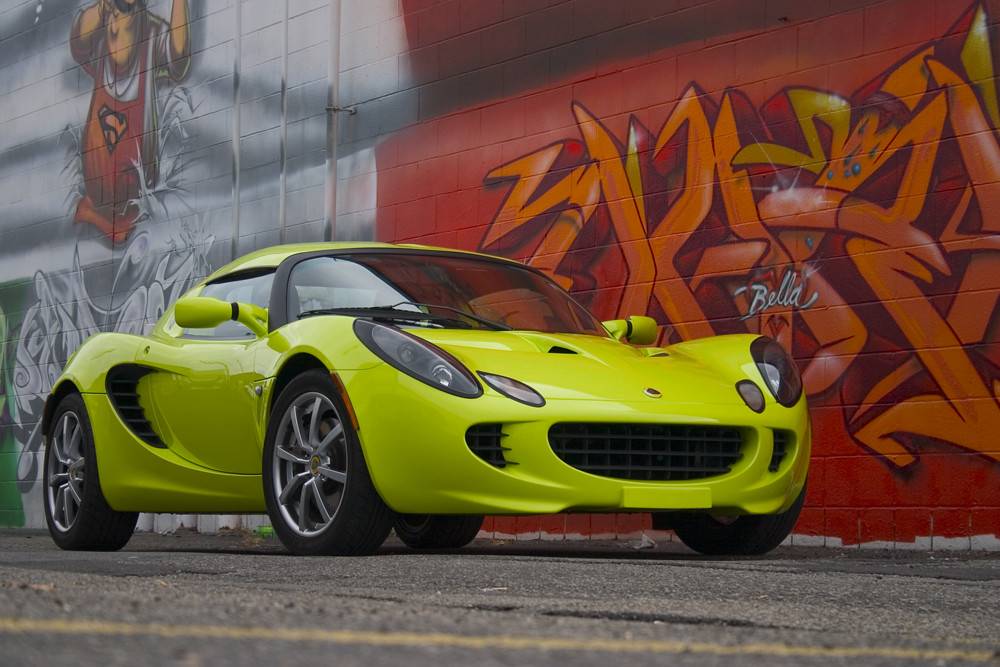
6. **Lotus Elise** The Lotus Elise exemplifies an “unrelenting focus on minimizing weight,” resulting in one of the most sublime-performing and exceptionally handling sports cars ever produced. This engineering marvel is hugely popular among enthusiasts seeking a “true driver’s car,” offering an unfiltered, visceral connection to the road. Its featherlight construction and precise handling deliver an unparalleled driving experience, making every journey an exhilarating event for the discerning retiree.
Spanning desirable production years from 1996 to 2011, the Elise functions as a modern classic, blending vintage charm with contemporary performance. Powered by a 1.8L Inline-Four engine, its modest output is masterfully utilized through an exceptional power-to-weight ratio, allowing for breathtaking acceleration and cornering. This perfectly embodies the “less is more” philosophy that has defined Lotus’s legendary innovations.
For retirees, the ultra-lightweight Elise offers a unique and compelling investment opportunity, driven by its reputation as a pure driving machine. Its enduring appeal within enthusiast circles translates into stable and appreciating market value. Owners gain not only a potentially profitable asset but also the profound satisfaction of piloting one of the finest handling sports cars ever made, perfectly blending a passionate automotive pursuit with a savvy financial decision for retirement.
Car Model Information: 2005 Lotus Elise Supercharged
Caption: Lotus Elise S Club Racer (Series 3)
Name: Lotus Elise
Manufacturer: Lotus Cars
Production: 1996–2021,35,124 produced
Assembly: Hethel,Norfolk,England
Predecessor: Lotus Elan#Elan M100
Successor: Lotus Emira,Lotus Theory 1
Class: Sports car
BodyStyle: Targa top,Roadster (automobile)
Layout: Rear mid-engine, rear-wheel-drive layout
Platform: Lotus small car platform
Sp: uk
Categories: 2000s cars, 2010s cars, All articles with dead external links, All articles with unsourced statements, Articles with dead external links from November 2016
Summary: The Lotus Elise is a sports car conceived in early 1994 and released in September 1996 by the British manufacturer Lotus Cars. A two-seater roadster with a rear mid-engine, rear-wheel-drive layout, the Elise has a fibreglass body shell atop its bonded extruded aluminium chassis that provides a rigid platform for the suspension, while keeping weight and production costs to a minimum. The Elise was named after Elisa Artioli, the granddaughter of Romano Artioli who was chairman of Lotus and Bugatti at the time of the car’s launch.
Production of the Elise, Exige and Evora ended in 2021. It was replaced by the Lotus Emira.
Get more information about: Lotus Elise
Buying a high-performing used car >>>
Brand: Lotus Model: Elise
Price: $72,999 Mileage: 25,000 mi.
Read more about: The Electrified Horizon: 14 Game-Changing EVs Poised to Redefine the Automotive Industry in 2026
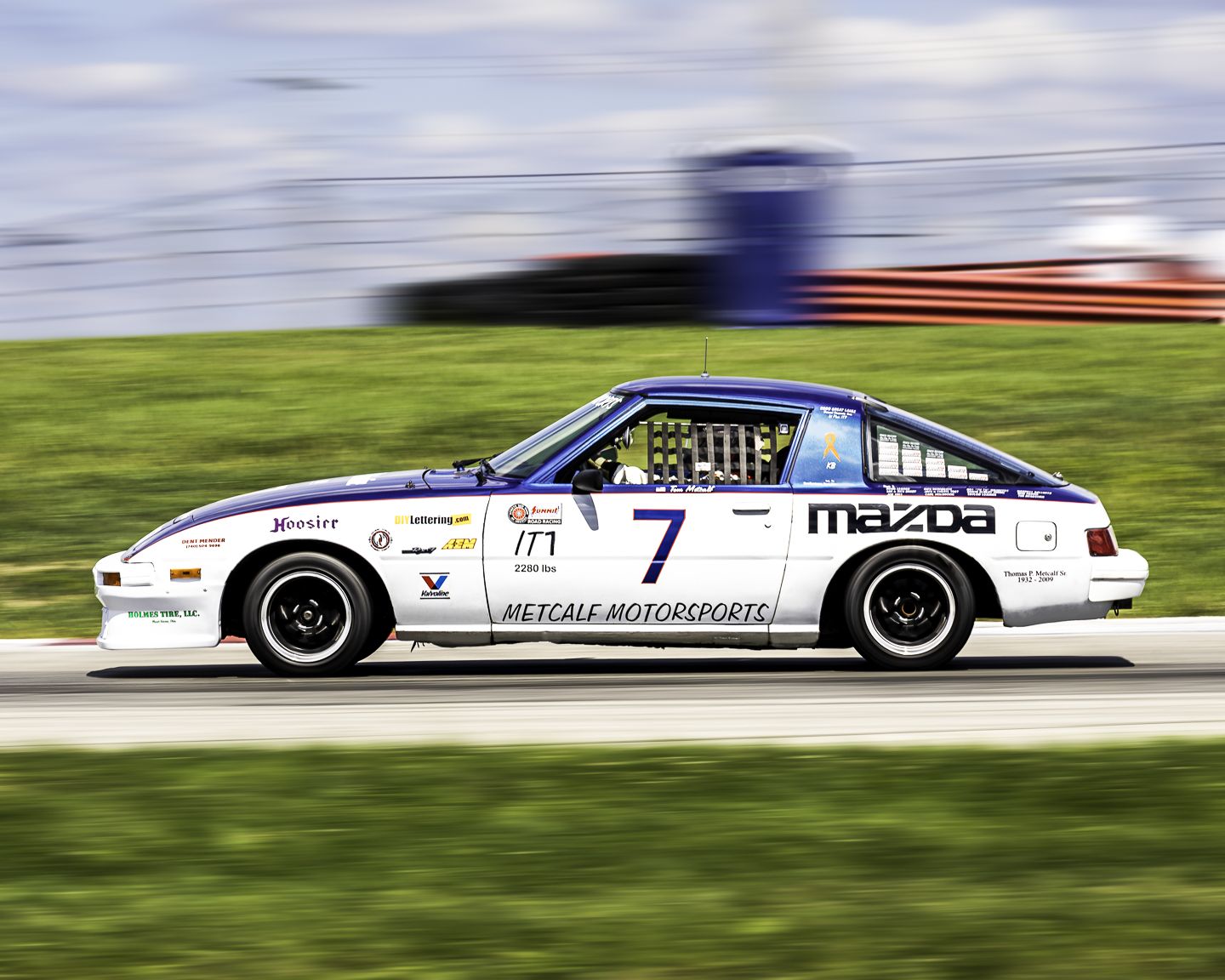
7. **Mazda RX-7** The Mazda RX-7 vividly exemplifies the surging popularity of Japanese Domestic Market (JDM) cars, firmly establishing itself as a modern classic. Pristine examples now routinely fetch close to $50,000, signaling a significant and ongoing increase in market value. With its captivating, sleek Japanese design and a highly distinctive Wankel rotary engine, the RX-7 uniquely enchants enthusiasts with its blend of style and groundbreaking engineering.
From an investment standpoint, desirable years typically span between 1985 and 1997, encompassing the highly sought-after second (FC) and third (FD) generations. These models are prized by collectors for their refined aesthetics and performance. The car’s signature Wankel rotary engine, available in various 1.1L and 1.3L configurations, delivers a uniquely smooth, high-revving power that sets it apart, a cornerstone of its appeal and intrinsic collector value.
For retirees contemplating a classic car that combines exotic flair with a robust investment profile, the Mazda RX-7 is an outstanding choice. Its unique engine, striking design, and formidable performance ensure its place in automotive history and its continued appreciation. Owning an RX-7 means delving into the fascinating world of rotary engines and joining a vibrant JDM car community, offering a profoundly rewarding hobby while simultaneously benefiting from its increasing worth in retirement.
Car Model Information: 1986 Mazda RX-7 GXL 2D Coupe
Name: Mazda RX-7
Caption: 1994 Mazda RX-7 R2 (FD3S)
Manufacturer: Mazda
Aka: Mazda Savanna RX-7 (Japan, 1978–1991),Mazda ɛ̃fini RX-7 (Japan, 1991–1997)
Class: Sports car
Production: 1978–2002,811,634 produced
Assembly: Hiroshima
Platform: Mazda F platform
Layout: Front-engine, rear-wheel-drive layout#Front mid-engine, rear-wheel-drive layout
Predecessor: Mazda RX-3
Successor: Mazda RX-8
Categories: 1980s cars, 1990s cars, 2000s cars, 24 Hours of Le Mans race cars, All articles needing additional references
Summary: The Mazda RX-7 is a front mid engine, rear-wheel-drive, rotary engine-powered sports car, manufactured and marketed by Mazda from 1978 through 2002 across three generations, all of which incorporated the use of a compact, lightweight Wankel rotary engine.
The first-generation RX-7, codenamed SA (early) and FB (late), is a two-seater two-door hatchback coupé. It featured a 12A carbureted rotary engine as well as the option for a 13B rotary engine with electronic fuel injection in later years. The second-generation RX-7, carrying the internal model code FC, was offered as a two-seater coupé with a 2+2 option available in some markets, as well as in a convertible body style. This was powered by the 13B rotary engine, offered in naturally aspirated or turbocharged forms. The third-generation RX-7, model code FD, was offered as a two-seater coupé with a 2+2 version offered as an option for the Japanese market. It featured a sequentially turbocharged 13B REW engine.
More than 800,000 RX-7s were manufactured over its lifetime.
Get more information about: Mazda RX-7
Buying a high-performing used car >>>
Brand: Mazda Model: RX-7
Price: $13,991 Mileage: 52,352 mi.
Read more about: The Ultimate Nineties Rewind: 15 Coolest Cars of the Decade That Still Fuel Our Automotive Dreams
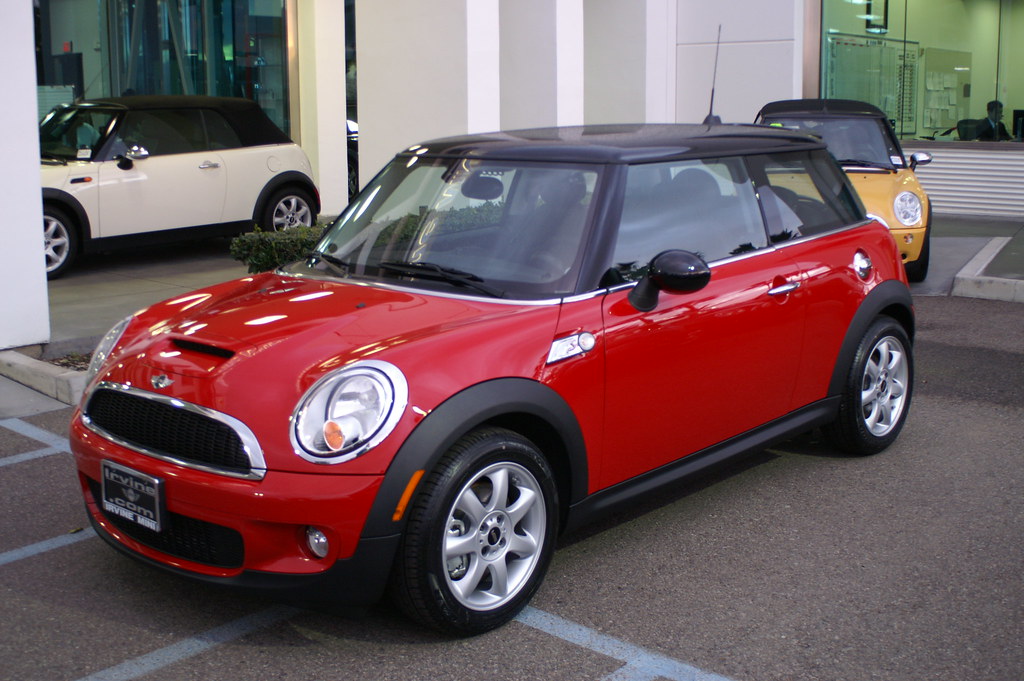
8. **Mini Cooper** The original Mini Cooper, a genuine icon of 1960s British popular culture, holds a unique place in automotive history. Produced for decades by various manufacturers, its diminutive size and charming character have captivated generations. Its enduring appeal is further buoyed by today’s revived Mini, fueling renewed interest in its vintage predecessors and translating into a steady increase in the value of clean, well-preserved examples.
For retirees, the Mini Cooper offers more than just a car; it’s a slice of cultural history. Evoking nostalgia and a sense of timeless fun, its compact dimensions make it surprisingly practical for urban retirees. A robust community also provides ample opportunities for social engagement, enriching the ownership experience.
With desirable production spanning 1959 to 2000, and a range of inline-four engines (848cc to 1,275cc), diverse models await investors. The Mini’s consistent growth in value, universal recognition, and global parts network position it as an excellent, accessible investment. It perfectly blends a cheerful hobby with solid financial foresight for retirement.
Car Model Information: 2013 MINI Coupe Cooper S
Sp: uk
Caption: 1959 Morris Mini-Minor (first one built)
Name: Mini
Aka: Austin 850,Rover Mini,Austin Cooper,Austin Mini,Austin Partner,Austin Seven,Innocenti Mini,Leyland Mini,Morris 850,Morris Mascot,Morris Mini Minor,Riley Elf,Wolseley 1000 (South Africa),Wolseley Hornet
Layout: Front-engine, front-wheel-drive layout
Manufacturer: British Motor Corporation,British Leyland,Rover Group
Production: 1959–2000 (5.38 million)
Class: City car
BodyStyle: sedan (car),convertible,Station wagon,sedan delivery,coupe utility
Engine: BMC A-series engine,Straight-four engine
Designer: Alec Issigonis,John Sheppard (car designer)
Transmission: 4-speed manual,AP automatic transmission,5-speed manual (optional extra on some later models)
Length: cvt,cvt,cvt
Width: cvt
Height: cvt
Weight: cvt
Wheelbase: cvt,cvt
Related: Mini Moke,Austin Metro,Innocenti Mini,Mini Wildgoose,Mini Marcos
Successor: Austin Metro,Mini Hatch
Assembly: Panmure, New Zealand
Categories: 1960s cars, 1970s cars, 1980s cars, 1990s cars, 2000s cars
Summary: The Mini is a very small two-door, four-seat car, produced for four decades over a single generation, with many names and variants, by the British Motor Corporation (BMC) and its successors British Leyland and the Rover Group, and finally (briefly) under BMW ownership. Minis were built as fastbacks, estates, convertibles, and various other body styles. Minus a brief 1990s hiatus, from 1959 into 2000, an estimated 5.38 million of all variations combined were built, and the Mini’s engines also powered another 2 million Mini Metros, though the Mini eventually outlasted its successor.
Initially, the Mini was marketed under the Austin and Morris names, as the Austin Seven and Morris Mini-Minor; the Austin Seven was renamed Austin Mini in 1962 and Mini became a marque in its own right in 1969. Retrospectively, the car is known as the “Classic Mini” to distinguish it from the modern MINI family of vehicles produced since 2001 by German carmaker BMW, who took ownership of the Mini name following the sale of Rover Group in 2000.
This distinctive two-door car was designed for BMC by Sir Alec Issigonis. Its space-saving transverse engine and front-wheel drive layout – allowing 80% of the area of the car’s floorpan to be used for passengers and luggage – influenced a generation of car makers. The front-wheel-drive, transverse-engine layout were used in many other “supermini” style car designs such as Honda N360 (1967), Nissan Cherry (1970), and Fiat 127 (1971). The layout was also adapted for larger subcompact designs. In 1999, the Mini was voted the second-most influential car of the 20th century, behind the Ford Model T, and ahead of the Citroën DS and Volkswagen Beetle. It is also considered an icon of 1960s British popular culture.
The Mini Mark I had three major UK updates: the Mark II, the Clubman, and the Mark III. Within these was a series of variations, including an estate car, a pick-up, a van, and the Mini Moke, a jeep-like buggy. The performance versions, the Mini Cooper and Cooper “S”, were successful as both race and rally cars, winning the Monte Carlo Rally in 1964, 1965, and 1967. The Mini was manufactured in England at the Longbridge plant in Birmingham located next to BMC’s headquarters and at the former Morris Motors plant at Cowley, as well as in Australia (Victoria Park/Zetland BMC Australia factory) and later also in Spain (Authi), Belgium, Italy (Innocenti, as the Innocenti Mini), Chile, Malta, Portugal, South Africa, Uruguay, Venezuela, and Yugoslavia (IMV). In 1980, British Leyland launched the Mini’s follow-up, the Austin Metro, however the Mini outlasted it and continued to be produced at Longbridge until October 2000.
Get more information about: Mini
Buying a high-performing used car >>>
Brand: Mini Model: Cooper
Price: $12,425 Mileage: 78,956 mi.
Read more about: South Korea’s Master Class: Navigating the Complexities of a Second Donald Trump Administration
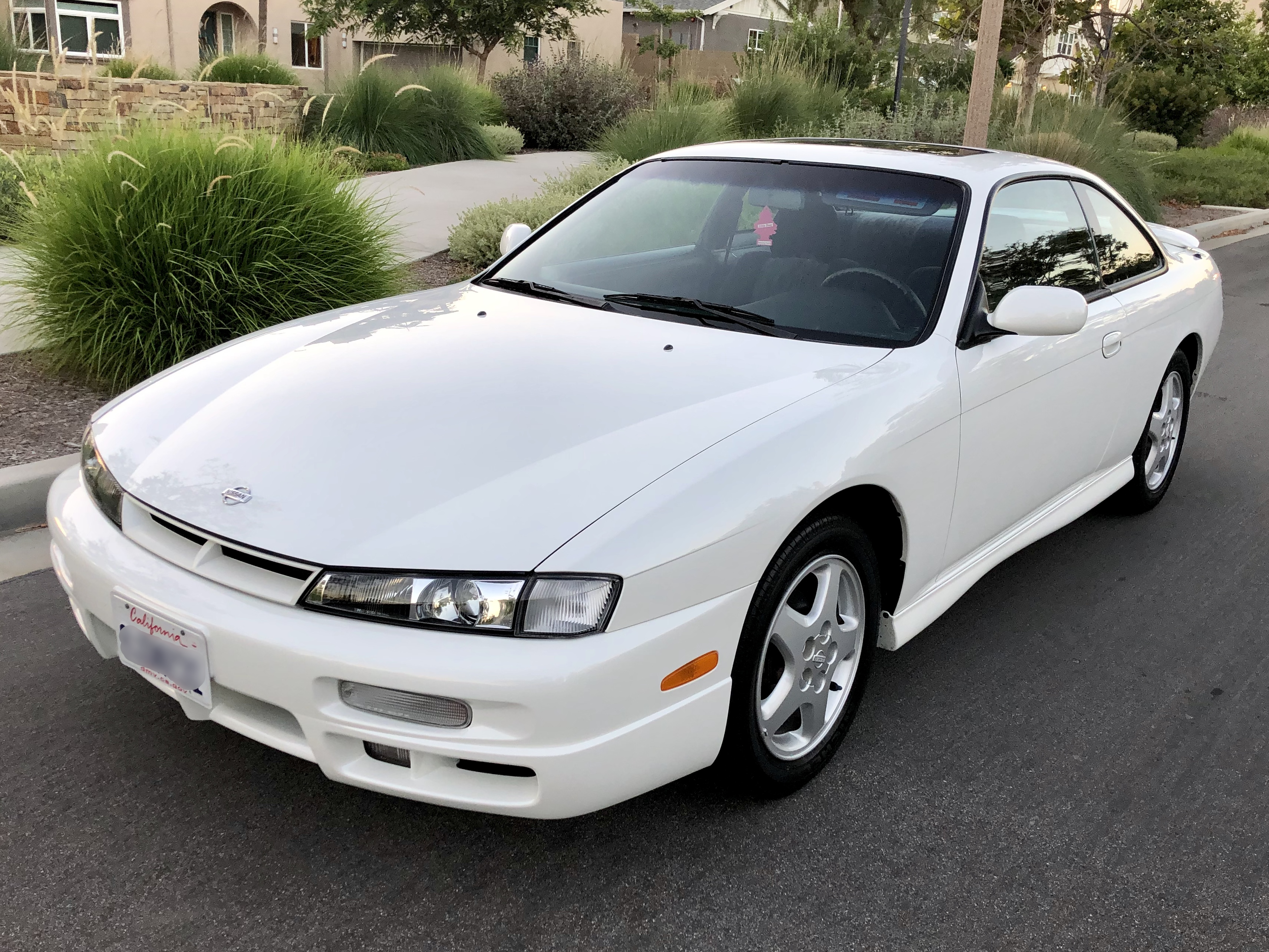
9. **Nissan 240SX** The Nissan 240SX stands as a sporty vintage Japanese hatchback, produced across two generations: the S13 (1989-1994) and S14 (1994-1998). These models have rapidly ascended in popularity, particularly among JDM enthusiasts, and are now steadily increasing in value. Powered by a reliable 2.4-liter inline-four engine, both generations offer an engaging driving experience from a golden era of Japanese sports car engineering.
The 240SX’s appeal extends beyond performance; its clean lines and adaptable platform made it a favorite for customization and motorsport. However, many surviving examples have been modified or raced, making original and well-maintained specimens increasingly rare and coveted. This scarcity naturally drives up the value of pristine examples.
For retirees, the 240SX presents one of the more affordable entry points into investment-grade classics, with clean examples typically ranging from $10,000 to $25,000. Its strong collector following and the increasing scarcity of original cars suggest significant future appreciation. It’s an attractive option for those seeking a financially sensible investment that also offers the enjoyment of owning a celebrated piece of automotive history.
Car Model Information: 1997 Nissan 240SX LE
Name: Nissan 240SX
Manufacturer: Nissan
Class: Sports car
Production: 1988–1998
Layout: FR layout
Caption: 1990 Nissan 240SX SE Hatchback (S13) in the USA.
Platform: Nissan S platform
Assembly: Kanda, Fukuoka
Related: Nissan Silvia,Nissan 180SX
Predecessor: Nissan Silvia#S12
ModelYears: 1989-1998
Categories: 1990s cars, All articles needing additional references, All articles to be expanded, All articles with unsourced statements, Articles needing additional references from June 2008
Summary: The Nissan 240SX is a sports compact car that was introduced to the North American market by Nissan in 1988 for the 1989 model year. It replaced the outgoing 200SX (S12) model. Most of the 240SXs were equipped with the 2.4-liter inline-four engine (KA24E from 1989 to 1990 and KA24DE from 1990 to 1998). The KA24E had a single overhead cam and the KA24DE had dual overhead cams. Two distinct generations of the 240SX, the S13 (1989–1994) the S14 (1994-1998) were produced, based on the Nissan S platform.
The 240SX is closely related to other S platform based vehicles, such as the Japanese-market Silvia and 180SX, and the European-market 200SX. Although their names are similar, the 240SX is unrelated to the 240Z or the 280ZX.
The 240SX is known for its popularity within drifting and tuner culture. However, due to the popularity of the S-chassis in drifting and related competitions, prices for vehicles and parts have greatly increased due to higher demand. This problem is sometimes known as “drift tax”.
Get more information about: Nissan 240SX
Buying a high-performing used car >>>
Brand: Nissan Model: 240SX
Price: $49,995 Mileage: 152,446 mi.
Read more about: Beyond the Luster: 15 Luxury Cars That Dazzle Visually But Disappoint Behind the Wheel, According to Owners and Experts
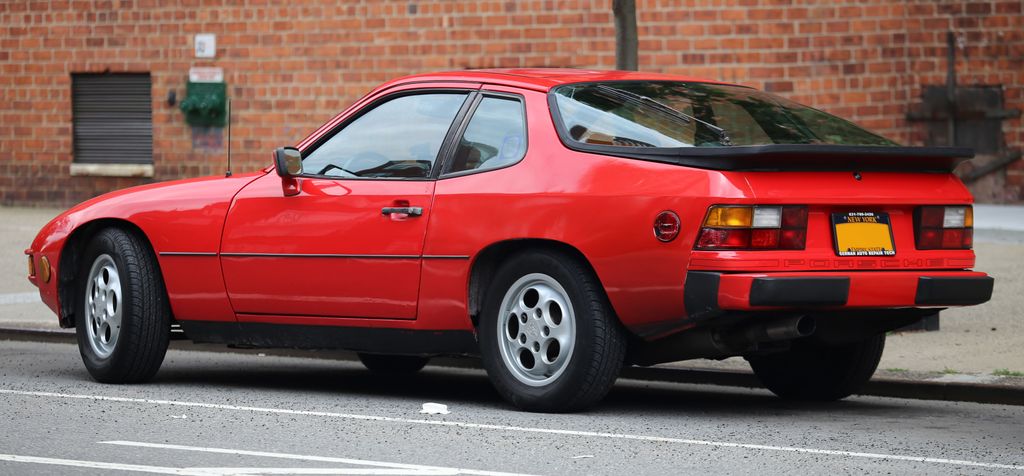
10. **Porsche 924/944** Once overlooked as “rebadged Volkswagens” rather than “true Porsches,” the Porsche 924 and 944 models have experienced a remarkable re-evaluation. This mirrors a broader appreciation for all vintage Porsches, including previously “oddball” models, solidifying the 924/944 as incredibly valuable assets in the classic car market. From a purely financial standpoint, these front-engined Porsches are now recognized as astute investment cars with significant appreciation potential.
Their desirable production years, from 1976 to 1991, encompass a range of inline-four engines (2.0L to 3.0L, including turbocharged variants). These powertrains deliver a balanced driving experience, combining Porsche’s renowned engineering with everyday usability. This makes them ideal for spirited weekend drives or longer tours, offering both performance and practicality.
For retirees seeking a classic with a prestigious badge and strong investment credentials, the 924/944 offers an accessible pathway into Porsche ownership. These models blend German engineering, engaging performance, and steadily appreciating value, making them a compelling choice. Their growing recognition ensures owning one is not just a personal pleasure but a strategically sound long-term financial decision.
Read more about: Future Fortunes on Four Wheels: 14 Classic Cars You Need to Buy Now Before Their Value Explodes

11. **Renault 5 GT Turbo** The Renault 5 GT Turbo is a captivating Euro classic, a street-legal machine directly derived from an iconic Group B rally car. This lineage imbues it with an undeniable thrill, making it “a ridiculously cool car that’s undeniably thrilling to drive.” It embodies a raw, unadulterated performance spirit, attracting enthusiasts who crave a visceral connection to the road.
What truly sets the 5 GT Turbo apart as an investment is its astonishing rate of appreciation. It stands out as potentially the fastest-appreciating classic car available for under six-figures, having seen its value skyrocket by 25% in the last year alone. This rapid growth is a clear indicator of its burgeoning desirability among collectors, driven by its Group B heritage and distinctive, ultra-widebody aero kit.
With desirable years spanning 1980 to 1986, these turbocharged 1.4L or 1.5L inline-four powered pocket rockets offer retirees a unique blend of investment potential and driving exhilaration. Its rarity, race-bred DNA, and dramatic styling promise not just a thrilling hobby but a genuinely strong return on investment. This is an exceptional opportunity for those who dare to invest in a piece of rallying history.
Car Model Information: 2022 Honda Civic Sport
Name: Renault 5
Caption: Second generation R5
Manufacturer: Renault
Production: 1972–1996
Class: Supermini car
Successor: Renault Clio,Renault Twingo
Categories: 1980s cars, 1990s cars, Articles with French-language sources (fr), Articles with Spanish-language sources (es), Articles with short description
Summary: The Renault 5 is a five-passenger, three or five-door, front-engine, front-wheel drive hatchback supermini manufactured and marketed by the French automaker Renault over two generations: 1972–1985 (also called R5) and 1984–1996 (also called Super 5 or Supercinq).
The R5 was marketed in the United States and Canada as Le Car, from 1976 until 1983. Renault marketed a four-door sedan variant, the Renault 7, manufactured from 1974 until 1984 in Spain by Renault’s subsidiary FASA-Renault and exported to select markets.
The Renault 5 became the best-selling car in France from 1972 until 1986, with a total production exceeding 5.5 million over 14 years, making it France’s most popular car.
Get more information about: Renault 5
Buying a high-performing used car >>>
Brand: Renault Model: 5 GT Turbo
Price: $25,849 Mileage: 16,061 mi.
Read more about: Unleashing the Beasts: A Deep Dive into the 7 Greatest Euro Hot Hatches of the 2000s that Still Thrill Enthusiasts
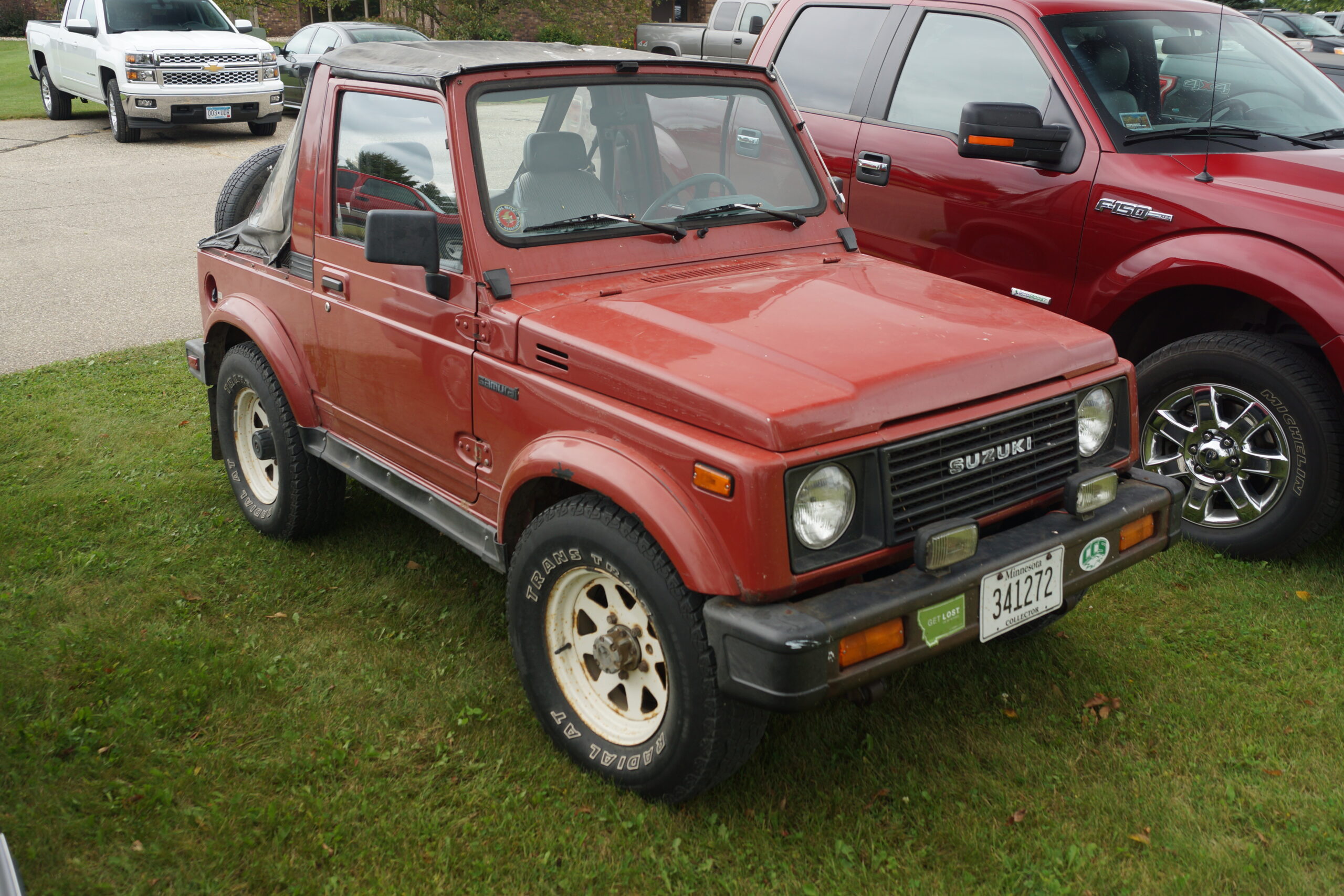
12. **Suzuki Samurai** Once seen as merely a quirky and affordable 4×4 platform, the Suzuki Samurai has steadily evolved into a legitimate collector car. It commands a niche, yet dedicated, following that continues to expand, transforming its market standing from a utilitarian vehicle to a coveted classic. Its compact size, rugged simplicity, and legendary off-road capability have made it an enduring favorite.
For retirees interested in a robust, go-anywhere classic without breaking the bank, the Samurai represents a fantastic opportunity. With average examples typically fetching around $10,000, adding one to a collection is accessible. This affordability, combined with its burgeoning collector status, makes it an intelligent entry point for investing in the vintage 4×4 market.
Desirable production years range from 1985 to 1995, all powered by a dependable 1.3L Inline-Four engine. Its straightforward mechanical design means maintenance can be less complex and more budget-friendly than with intricate European classics, enhancing its appeal. Owning a Samurai offers the dual benefit of a fun, practical hobby vehicle for outdoor adventures and a steadily appreciating asset recognized for its unique contribution to automotive history.
Car Model Information: 1987 Suzuki Samurai
Name: Suzuki Jimny
Caption: 2019 Suzuki Jimny SZ5
Manufacturer: Suzuki
Production: April 1970 – present (2.85 million units sold by September 2018)
Class: Off-road vehicle,mini SUV
BodyStyle: SUV,van,convertible,pickup truck
Layout: Front-engine, rear-wheel-drive layout,Front-engine, four-wheel-drive layout
Chassis: Body-on-frame
Related: Maruti Gypsy
Categories: 1980s cars, 1990s cars, 2000s cars, 2010s cars, All articles with minor POV problems
Summary: The Suzuki Jimny (Japanese: スズキ・ジムニー, Suzuki Jimunī) is a series of four-wheel drive off-road mini SUVs, manufactured and marketed by Japanese automaker Suzuki since 1970.
Originally belonging to the kei class, Japan’s light automobile tax/legal class, the company continues to market a kei-compliant version for the Japanese and global markets as the Jimny, as well as versions that exceed kei-class limitations. Suzuki has marketed 2.85 million Jimnys in 194 countries through September 2018.
Get more information about: Suzuki Jimny
Buying a high-performing used car >>>
Brand: Suzuki Model: Samurai
Price: $24,000 Mileage: 21,797 mi.
Read more about: The Ultimate Nineties Rewind: 15 Coolest Cars of the Decade That Still Fuel Our Automotive Dreams
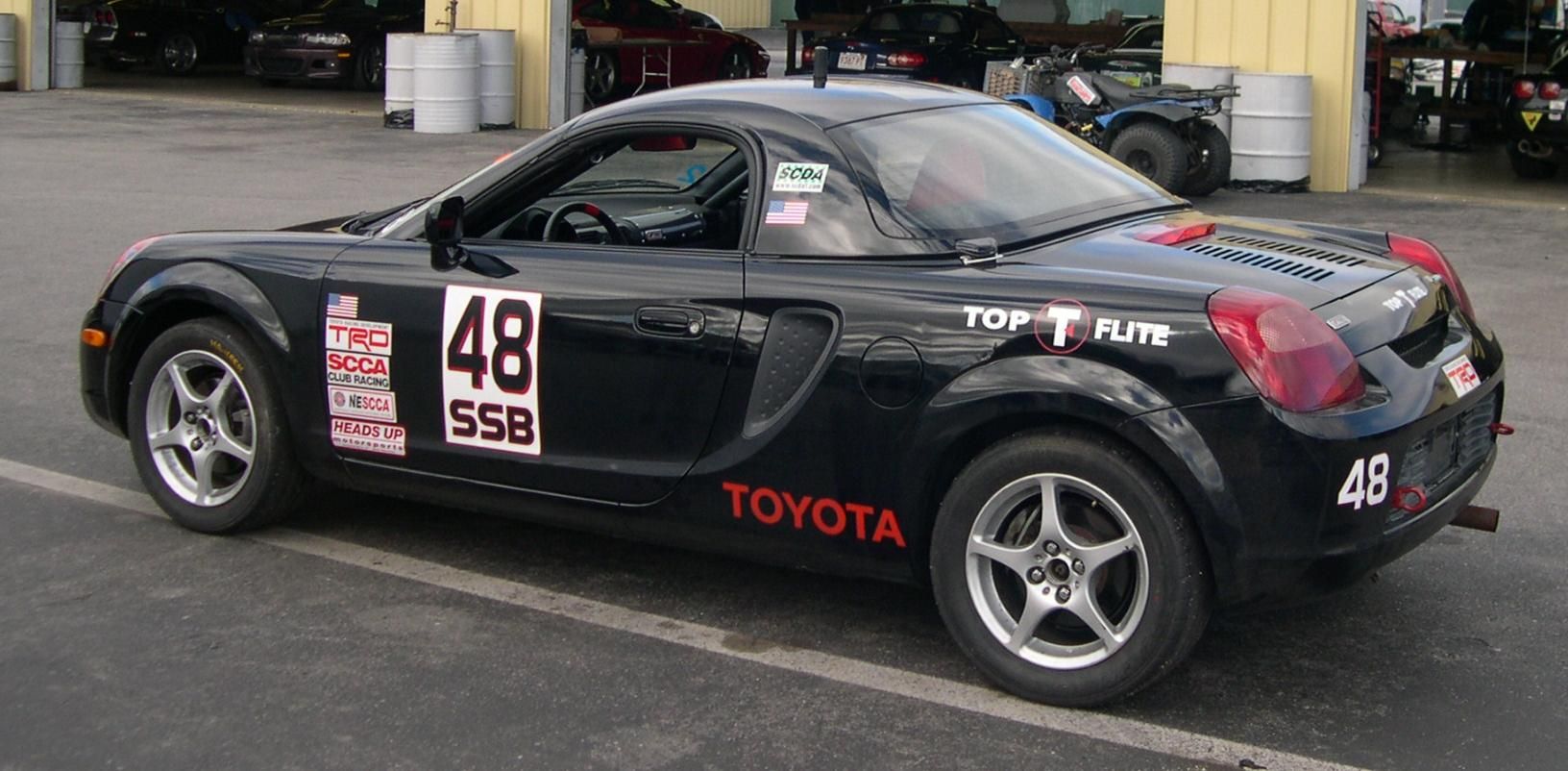
13. **Toyota MR2** The Toyota MR2 holds a significant place in automotive history as Japan’s first-ever rear mid-engined production car, presenting an exotic yet surprisingly affordable sports car classic. Produced across three generations, the first two (1984-1999) are most coveted from both investment and collector standpoints. Its innovative layout offers exceptional balance and handling, rivaling far more expensive European counterparts.
The MR2 was extensively campaigned in motorsport by both factory teams and privateers, cementing its performance credentials and adding to its allure. Its engines, ranging from 1.5L, 1.6L, or supercharged 1.6L Inline-Four configurations, deliver an engaging driving experience. This spirited performance, combined with its accessible price point and mid-engine layout, appeals to those who prioritize agile dynamics and a pure driving sensation.
For retirees, the Toyota MR2 offers a unique opportunity to own a genuinely exotic-feeling sports car that combines reliable Japanese engineering with strong investment potential. Its motorsport heritage and groundbreaking design ensure continued appreciation in value, while its passionate owner community provides a welcoming environment. The MR2 is an ideal choice for a retirement hobby promising thrilling drives and a smart financial return.
Car Model Information: 1988 Toyota MR2 Supercharged
Name: Toyota MR2
Caption: Second generation MR2
Manufacturer: Central Motors
Aka: Toyota MR (France and Belgium)
Production: 1984–2007
Assembly: Sagamihara, Kanagawa
Class: Sports car
Layout: Rear mid-engine, rear-wheel-drive layout
ModelYears: 1985–2007
Categories: 1990s cars, 2000s cars, All Wikipedia articles written in American English, All articles containing potentially dated statements, All articles needing additional references
Summary: The Toyota MR2 is a line of two-seater, mid-engined, rear-wheel-drive sports cars, manufactured in Japan and marketed globally by Toyota from 1984 until 2007 over three generations: W10 (1984–1989), W20 (1989–1999) and W30 (1999–2007). It is Japan’s first rear mid-engined production car.
Conceived as a small, economical and sporty car, the MR2 features a straight-four engine, transversely mounted in front of the rear axle, four-wheel disc brakes, and fully independent coilover suspension – MacPherson struts on each wheel.
The name MR2 stands for either “mid-ship run-about 2-seater” or “mid-engine, rear-wheel-drive, 2-seater”. In French-speaking markets, the vehicle was renamed Toyota MR because the abbreviation “MR2” sounds like the profanity “merdeux” when spoken in French.
Get more information about: Toyota MR2
Buying a high-performing used car >>>
Brand: Toyota Model: MR2
Price: $27,000 Mileage: 36,611 mi.
Read more about: Wrench Warrior’s Woes: 15 Car Models That Owners Say Are a Nightmare to Repair
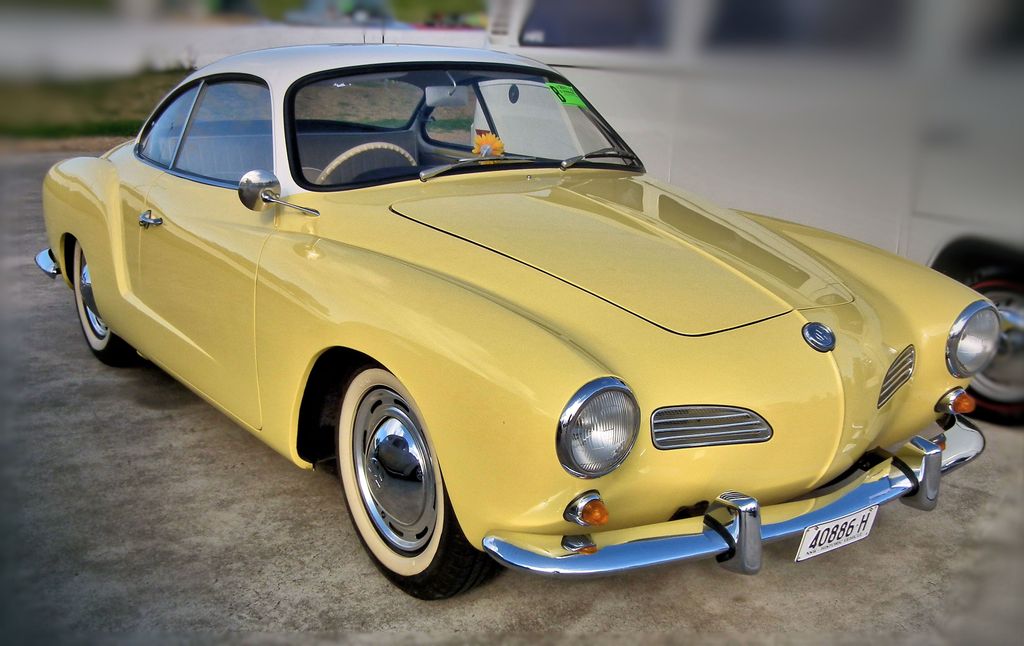
14. **Volkswagen Karmann Ghia** The Volkswagen Karmann Ghia is a stunning classic car offering an attractive investment entry point, with expectations for its value to greatly rise. Built atop the Type 1 Beetle platform, it features elegant bodywork penned by Italian design firm Carrozzeria Ghia and constructed by German coach-building house Karmann. This fusion of reliable Volkswagen mechanics with exquisite Italian design creates a timeless aesthetic that continues to captivate.
Its desirable production years stretch from 1955 to 1974, encompassing a range of Flat-Four engines (1.2L, 1.3L, 1.5L, or 1.6L) that provide a charming and reliable driving experience. The Karmann Ghia is notable as an investment-grade classic that can be driven regularly, with proper maintenance, without significantly compromising its long-term value. This practicality enhances its appeal for retirees who wish to actively enjoy their classic car.
For those seeking a classic that combines iconic style, dependable mechanics, and accessible ownership costs with strong appreciation potential, the Karmann Ghia is an outstanding choice. Its unique blend of European design heritage and Volkswagen robustness ensures a rewarding ownership experience, making it a perfect companion for retirement—both as a beautiful hobby and a sound, appreciating asset.
**Crucial Factors for Maximizing Value & Practicalities of Long-Term Ownership**
Beyond the thrill of selecting your next classic, ensuring its long-term value and enjoyment requires a strategic approach to ownership and preservation. Understanding the key factors influencing appreciation and the practicalities of upkeep is paramount for any retiree looking to protect and grow their automotive asset. It’s not just about the initial purchase; it’s about thoughtful stewardship that pays dividends, both financially and personally.
One of the most significant elements impacting a classic car’s value is its **originality**. The closer a car remains to its factory specifications, the more valuable it becomes. This extends to restoration processes; any modifications, even with upgraded aftermarket parts, typically decline value. Similarly, a repaint in a non-factory color can detract from worth. The gold standard is a “matching numbers” example—retaining original engine, gearbox, and frame with corresponding serial numbers. Early production numbers also tend to command higher values.
**Rarity** is another powerful driver of worth. Factors like production numbers, rare features (e.g., a sunroof), or being a limited-edition/high-performance trim level all significantly impact value. Scarcity is a fundamental component of what gives investment-grade classic cars their enduring appeal. This, combined with sustained demand, allows these vehicles to consistently outperform many traditional investments.
Comprehensive **documentation and records** are invaluable. A classic car with extensive documentation of its ownership history, including competition or servicing records, is far more valuable. This transparent paper trail offers potential investors a clear understanding of the vehicle’s care and any recurring issues. Retaining original items like tool kits and owner’s manuals also substantially enhances value, reinforcing authenticity and completeness.
The car’s **innovation and historical significance** also play a crucial role. Models that pioneered new technologies, achieved groundbreaking speeds, or boasted unique engine configurations often command higher values. Early generations of now-iconic models—such as the Ford Bronco or BMW M3—typically exhibit significant valuations, reflecting their foundational impact on automotive design and engineering.
Aesthetic appeal, or **appearance**, cannot be overlooked. While some valuable classics might possess unconventional designs, a vehicle with an iconic appearance that has gracefully withstood time generally achieves higher valuations. If designed by a famous designer or coachbuilder, this prestigious lineage further elevates its market worth, making the vehicle a piece of art as much as engineering.
For those considering an active investment, **competition history** adds a thrilling layer of value. Documented motorsport participation, especially in historically significant or high-level races, invariably increases a car’s worth. This is particularly true for examples achieving noteworthy race wins or championship titles. Furthermore, being driven by a famous team or driver, or built by an iconic race shop like Autodelta or Carroll Shelby, can further bolster its value.
Lastly, **previous ownership** can dramatically influence value. If a car was owned by a noteworthy celebrity, especially one with ties to motorsport (e.g., Steve McQueen or Paul Newman), its value can surge exponentially. Similarly, if the vehicle gained fame through film or television appearances, its cultural footprint translates into significant market appreciation. Fewer owners typically indicate better care and greater originality, also contributing positively to value.
**Maintaining and Preserving Your Investment**
Proper maintenance is critical for preserving and enhancing your classic car’s value. Neglecting this aspect can lead to diminished returns, making prioritized care essential. Phillip Griot advises climate-controlled storage to protect against environmental damage and professional servicing from trusted experts. Leslie Kendall stresses that maintaining originality, rather than aggressive over-restoration, is key to maximizing returns.
Essential practices include regular inspections to proactively address wear and tear. This involves mechanical checks and careful attention to bodywork, interior, and electrical systems. Using trusted professionals for repairs is crucial, as specialized knowledge is often required for vintage vehicles. These professionals understand the nuances of classic car mechanics and the importance of using original parts or period-correct equivalents to preserve authenticity. As noted, “It’s important to use original parts or equivalent whenever possible to preserve the authenticity and value of your classic car.” This commitment ensures your classic car remains not just a source of pride but a continually appreciating asset throughout your retirement.
**An Enduring Legacy for Your Golden Years**
Car Model Information: 2022 Honda Civic Sport
Name: Volkswagen Types 14, 34, and 145
Caption: 1962 Type 14 VW Karmann Ghia
Manufacturer: Volkswagen
Production: Germany,Type 14: 1955–1974,Type 34: 1961/1962–1969,
445,238 total units built:,Coupé: 364,401 (Type 14 and 34),Cabriolet: 80,837 (all Type 14)
Brazil,Type 14: 1962–1971,TC (Touring Coupé): 1972–1975,
41,689 total units built:,Coupé: 23,393,Cabriolet: 177,TC (Touring Coupé): 18,119
Related: Volkswagen Beetle,Volkswagen Type 3,Puma (car manufacturer)#Volkswagen era
Class: Sports car
BodyStyle: convertible (car)
Engine: flat-4
Designer: Carrozzeria Ghia
Layout: RR layout
Successor: Porsche 914,Volkswagen Scirocco,Volkswagen SP2
Assembly: Osnabrück
Categories: 1960s cars, 1970s cars, All articles with unsourced statements, Articles with short description, Articles with unsourced statements from May 2023
Summary: The Volkswagen Karmann Ghia are a family of three overlapping sports car models produced by Volkswagen, marketed in 2+2 coupe (1955–1975) and 2+2 convertible (1957–1975) body styles, though German production ended one year before that in Brazil. Internally designated the Type 14 (1955–1975), the Type 34 (1962–1969), and the Type 145 TC (1972–1975; Brazil), the Karmann Ghia cars combined the floorpans and mechanicals of the Type 1 / Beetle or Type 3 ‘ponton’ models with styling by Italy’s Carrozzeria Ghia, and hand-built bodywork by German coachbuilding house Karmann.
The 1955 Type 14 Karmann Ghia was just the second Volkswagen passenger car ever produced, after the Beetle, and launched six years before the Type 3 notchbacks, fastbacks and Variants (squarebacks). They were faster and more expensive than the Beetle, but very cramped in the back, despite their wider, postwar and nearly slabsided body design. Two years later, in 1957, a convertible was added.
In 1961, the Karmann Ghia briefly lost its title of fastest Volkswagen, upon launch of the more powerful 1500cc Type 3 models, but later that year, Volkswagen, Ghia, and Karmann presented an all new Karmann Ghia – Type 34, using the Type 3’s floorpan and 1500cc powertrain. Made from 1962 to 1969, this had both new, more modern, angular and roomier bodywork; and a new, more luxurious interior, making it substantially more expensive than all other VW passenger cars. Additionally, the Type 34 was one of the world’s first cars with a power operated steel sunroof option. The Type 34 Karmann Ghia thus became VW’s range-topper again – costing up to twice the price of a Beetle – while the cheaper Type 14 remained in production. Only the latter offered a convertible.
Failure to offer the Type 34 in the United States – the Karmann Ghia’s most important market – combined with high pricing elsewhere likely contributed to limited sales, and after the type 14 also received the 1500cc engine in 1967, production of Type 34s was ended during 1969. Volkswagen of Brazil nevertheless looked for an alternative in its market segment, and so Carrozzeria Ghia was again commissioned, to design a third Karmann Ghia model, for the South American market, the Karmann Ghia TC (Touring Coupé), made in Brazil from 1972–1975. The result was a stylish, rakish fastback that offered good interior space for a 2+2 car.
For its final model year, the vestigial rear seat in the Type 14 was discontinued for North American models, as it lacked provisions for seat belts; all Karmann Ghias for 1974 were marketed strictly as two-seaters.
More than 445,000 Karmann Ghias were produced in Germany over the car’s production life, not including the Type 34 variant. Volkswagen do Brasil (Volkswagen Brasil) produced 41,600 Type 34s in Brazil for South America between 1962 and 1975.
Long noted for its exterior styling, the Karmann Ghia was designed with input from numerous individuals at Carrozzeria Ghia and was strongly influenced by Virgil Exner’s work, though all of its designers passed without a definitive individual styling attribution.
Get more information about: Volkswagen Karmann Ghia
Buying a high-performing used car >>>
Brand: Volkswagen Model: Karmann Ghia
Price: $25,849 Mileage: 16,061 mi.
Read more about: Beyond the Badges: 10 Revolutionary 1960s Sports Cars Only True Collectors Will Recognize
As we’ve journeyed through these timeless machines, it’s clear that investing in a classic car for retirement offers a truly unique blend of financial wisdom and personal enrichment. From the exhilaration of a spirited drive to the quiet satisfaction of preserving a piece of history, these vehicles provide far more than just monetary returns. They unlock new communities, ignite dormant passions, and offer tangible assets that tell stories and create memories. Whether you’re drawn to the quirky charm of a Mini Cooper or the iconic lines of a Karmann Ghia, the path to classic car ownership is one paved with discovery. It’s an opportunity to embrace the golden years with purpose, a tangible link to a bygone era, and a robust investment that actively engages your spirit. So, as you contemplate your ideal companion for a thriving retirement, consider a classic car—it might just be the most rewarding journey you embark upon.

